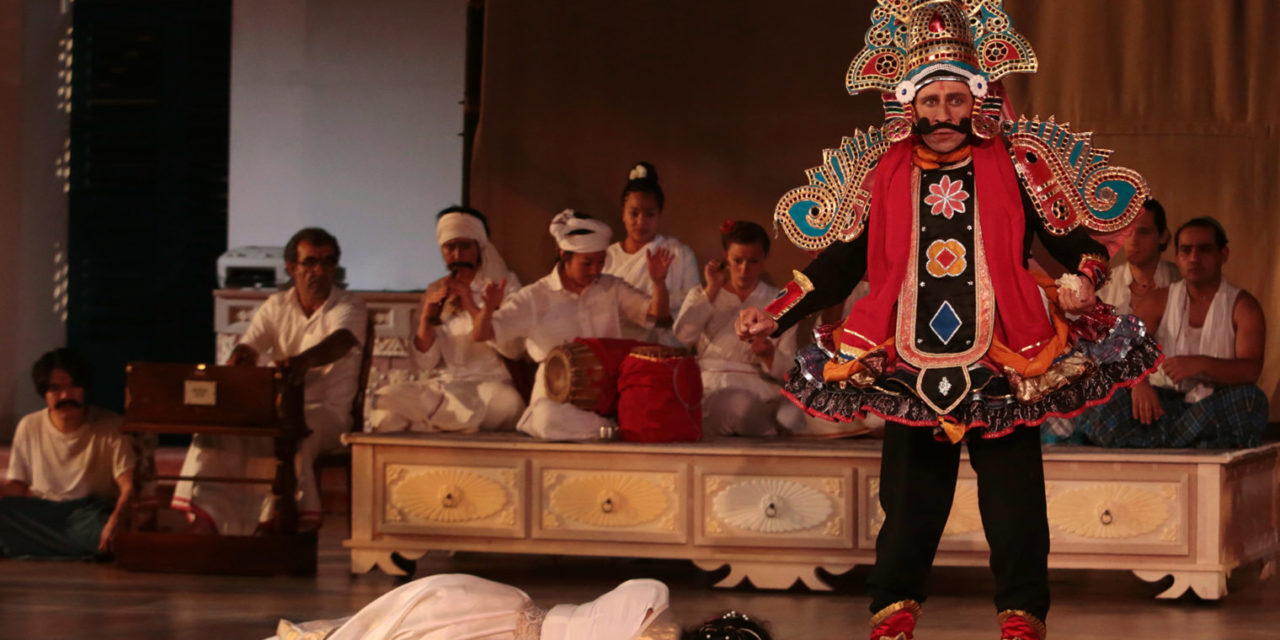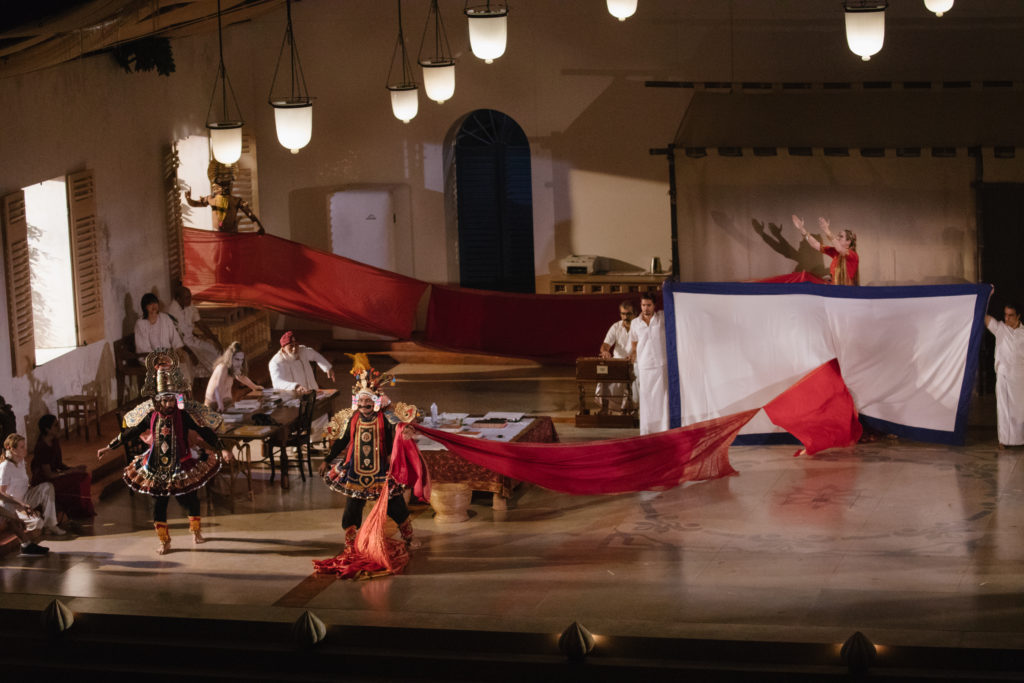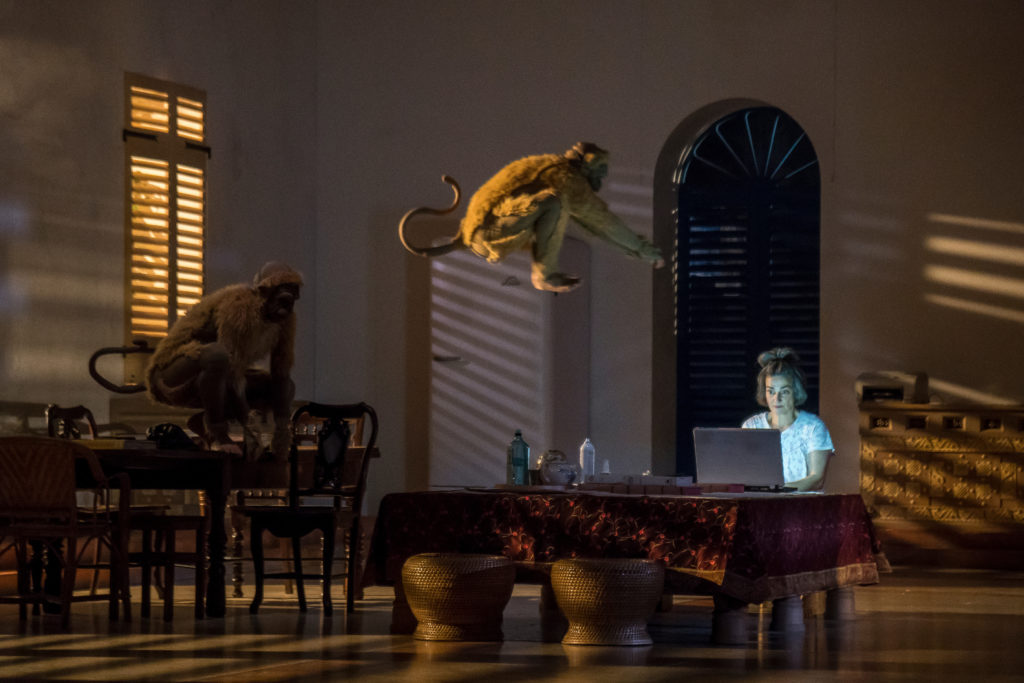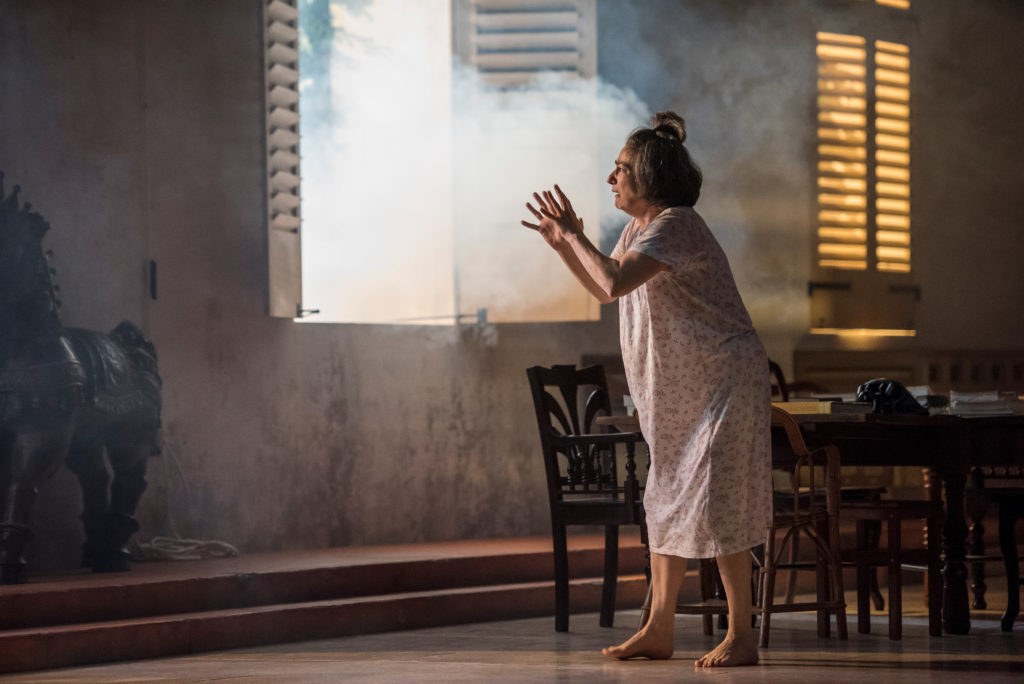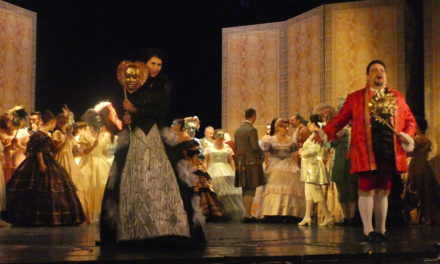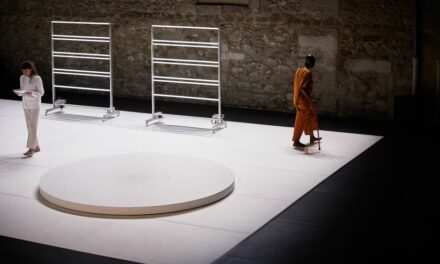If theater could save the world, it would no doubt do so under the exacting direction of Arianne Mnouchkine, who for more than fifty years has helmed the Théâtre du Soleil. This much and rightly acclaimed leftist French theater company operates out of the storied Cartoucherie, a former bullet-making factory on the outskirts of Paris where Mnouchkine also literally sleeps, eats, and breathes theater that is ferociously anti-war, anti-discrimination, and anti-capitalist. Her socialist principles inform both the organization of the company and the content of its individual productions, which in recent years have focused on the plight of refugees and asylum seekers. Brechtian hallmarks of her work include exposing the performers’ dressing area, allowing spectators entering the auditorium to watch the make-up being applied and witness the warm-ups being conducted.
The Théâtre du Soleil began work on the company’s latest endeavor, now playing at the Park Avenue Armory, shortly after the November 2015 terrorist attacks in Paris. Like much of the world, Mnouchkine and the hundred members of her company (who hail from twenty-six countries) were reeling, but rather than succumbing to paralysis they turned their fear and despair into A Room in India, which mostly transpires not in any “real” or literally-represented foreign country, but in the feverish dreams of Cornélia (Hélène Cinque), the assistant to a theater director who has recently suffered a kind of nervous breakdown and abandoned his troupe stranded in India. Lacking confidence and experience, Cornélia waits for visions to appear to give her some indication of how to lead the company into an uncertain future. Grappling with many of the same questions as Mnouchkine, Cornélia wonders how to make theater for a world being consumed by terrorism and hatred. What form ought it to take? What message ought it to convey? How can art be anything but hopelessly impotent and inadequate in the face of such daunting problems?
Over the course of the nearly four-hour performance that unfurls from this crisis, Cornélia is visited by a parade of visions that hail from an eclectic range of positions in time and space. Some seem to be at least partially conflated, in dream-like fashion, with figures from Cornélia’s waking life; after learning that her now-indisposed (and less-than-subtly named) mentor Constantin Lear was born in Japan, she has a vision of the famous “Nothing will come of nothing” scene between Shakespeare’s King Lear and Cordelia played by Japanese actors. Later Shakespeare himself drops in. Seated at the feet of the master, Cornélia encounters not the sage and serene genius she expects, but just another neurotic, self-critical artist who eventually exits the stage muttering to himself about how he should have written Macbeth and Richard III as comedies. Chekhov passes through. So does Mahatma Ghandi. So do a couple of monkeys played by human actors with astonishing capacities for physical mimicry. No one really has any answers for Cornélia, but collectively these figures create a richly sensuous pageant of impressions and sources of inspiration, if not action.
The most sumptuous of these interludes come in the form of several scenes from the Terukuttu theater, enacted in elaborate traditional regalia and largely sung through in the gorgeous, full-throated Carnatic style particular to Southern India. Like many Indian art forms, the Terukuttu theater is considered to be divinely inspired, and most of its themes and scenarios are drawn from the Mahabharata, the foundational Hindu epic. Mnouchkine here engages us in a complicated act of cross-cultural identification. We are invited to revel in the splendor of the Terrukuttu mise en scène, even as the plots and character depictions may rankle contemporary Western sensibilities. One extended sequence, for example, shows the assault of Draupadi, who is able to elude rape by praying to the god Krishna, who endows her with a sari supernaturally reinforced with so many extra layers that eventually her frustrated captor is forced to simply give up, exhausted from the effort of trying to undress her. Draupadi, a polyandrist, is regarded by some as a feminist icon for the successful resistance she puts up against male violence and incompetence throughout the Mahabharata, but it is still exhausting and a bit queasy-making just to watch her protracted scene of suffering.
Other depictions of foreign cultures come with more clear-cut, if provisional, points of view. As Cornélia wonders about the most useful and appropriate ways to represent her culture’s “enemies,” in this case the ISIS affiliates who claimed responsibility for the Paris attacks, she imaginatively tests the proposition that it might be possible and acceptable to diminish them through ridicule. What results is an improbably delightful spoof of an ISIS crew bungling the production of a beheading video in the desert. Many botched takes and many goofy, fifteen-second audio samples of the theme from Lawrence of Arabia in, a veiled woman slated for execution finally takes control of the set, reverses the roles, and finishes the job that her male counterparts couldn’t manage.
Some of the most powerful “visions” Mnouchkine shares with us are the least exotic. A performer burdened down with a staggering load of stacked and folded newspapers traverses a stage dense with loose pages being blown through the air. This image accompanies a scene involving Cornélia unburdening herself to a friend who confesses that she worries something might be wrong with her. When other people read the news these days, surely they don’t have so much intellectual and emotional trouble making sense of what is happening in, say, Syria? Surely other people have an easier time keeping places and names, causes and effects straight? These scenes of heartbroken, ordinary people trying and failing to wrap their heads around, let alone alleviate, the suffering of the world’s most vulnerable do not dominate the production, but they extrapolate the dilemma of the artist with unusual compassion.
A Room in India was devised “in harmony with” the great feminist philosopher Hélène Cixous, who has been a regular collaborator of the Théâtre du Soleil’s for decades. The texts Cixous creates with Mnouchkine incorporate discoveries made by actors during improvisations, and ambitious as they are it is difficult to imagine them retaining their power divorced from the company for which they were produced. Sprawling and excessive, their attitude toward time luxurious, Cixous’s plays sometimes lack the playfulness one might expect from the author of “The Laugh of the Medusa,” her influential essay on écriture feminine. A Room in India, however, is refreshingly irreverent and even scatological on occasion—Cornélia’s high-flown dream life is rudely interrupted on numerous occasions when anxiety sends her running to make use of the onstage toilet. The body, in all its wisdom and indignity, continually asserts itself as the foundation of empathy and the center of the theatrical event.
While theater probably cannot save us, Mnouchkine’s palpable faith in the form makes one wonder whether a world without theater would be one worth saving at all, and the audaciously, insistently feminine spectacles she and Cixous create allow us to experience alternative rhythms and approaches to difference seldom otherwise available to us in our perpetually warring world. This may be a form of palliative care, but it still feels authentically transformational and completely essential.
A Room in India
Created by the Théâtre du Soleil
In Harmony with Hélène Cixous
Directed by Arianne Mnouchkine
The Park Avenue Armory
New York City
December 5-20, 2017
This post was written by the author in their personal capacity.The opinions expressed in this article are the author’s own and do not reflect the view of The Theatre Times, their staff or collaborators.
This post was written by Jessica Rizzo.
The views expressed here belong to the author and do not necessarily reflect our views and opinions.

